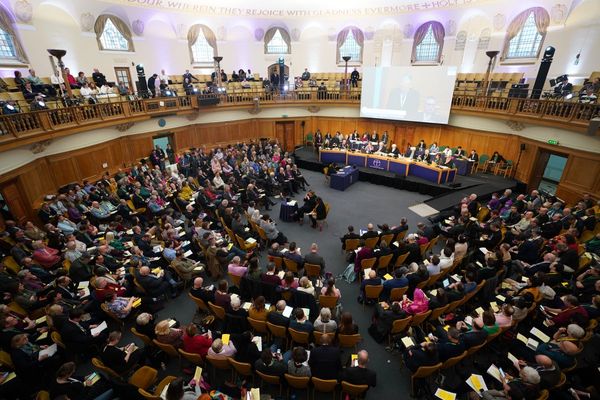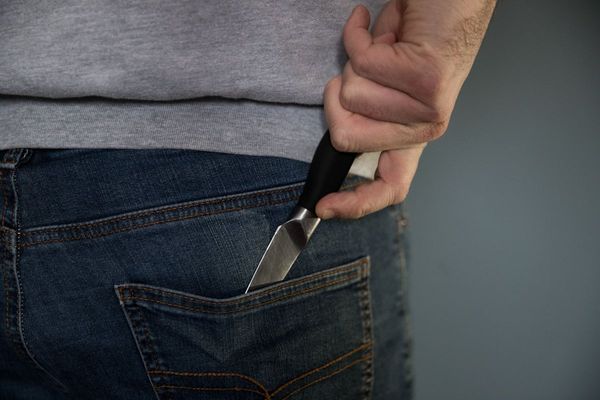Face masks have been an essential tool throughout the COVID-19 pandemic in stopping the spread of the virus.
But as the Omicron variant continues to infect millions of people at an unprecedented rate, there are calls to reconsider what type of mask is suitable.
The US Centers for Disease Control and Prevention (CDC) is reported to be considering updating its mask advice to recommend people wear N95 masks.
While official Australian health advice hasn't changed, a growing number of medical experts say people should be proactive in upgrading their protection.
Click on a link below to jump to the section.
- What type of face mask is required by law?
- What type of face mask protects against the Omicron variant?
- What is an N95 mask?
- What is a surgical mask?
- What is a cloth mask?
- Can you reuse surgical or N95 masks?
- Should you double mask?
- What is the best face mask for children?
- Should you make your own face mask?
What type of face mask is required by law?
Each state and territory has different rules about when you need to wear a face mask, but the definition of a face mask is similar across Australia.
A face mask can be a reusable cloth face mask or a single-use surgical mask, which can include a P2 or N95 mask.
The face mask should be fitted securely around the face and cover both the nose and mouth.
Some jurisdictions specify cloth face masks be made of at least two or three layers of fabric.
A scarf, bandana, snood or face shield is not a face mask.
What type of face mask protects against the Omicron variant?
A growing group of experts say medical respirators, known as N95 or P2 masks, are the only masks that can prevent the transmission of the COVID-19 Omicron variant.
Brisbane-based data scientist Jeremy Howard, who in 2020 did the world's largest review of evidence on face masks and the ability to stop aerosol spread of COVID-19, told The World Today that the evidence is evolving.
"Ditch your cloth masks and also ditch your surgical masks," he says.
"Omicron is so aerosolised, so it's such tiny particles that float in the air.
"When you breathe in, you're sucking in those respiratory particles."
Infectious diseases specialist Dr Paul Griffin says N95 masks do provide more protection, but were not normally recommended for widespread use in the community because they are more expensive and challenging to wear.
"We see so many people with masks that are perfectly fine that then don't cover their nose.
"The main thing is still that people wear them properly."
Australia's Infection Control Expert Group says a mask or respirator is not a substitute for other precautions to prevent the spread of COVID-19 including getting tested, staying home when unwell, physical distancing, good internal ventilation, hand hygiene and cough etiquette.
In Australia, the COVID-19 vaccination is recommended for all people aged five years and above.
What is an N95 mask?
N95 masks, also known as P2 masks in Australia, are particulate filter respirators.
They are also sold under the name KN95.
These masks filter out very fine particles and help protect against droplet and airborne transmission.
Particulate filter respirators can also be used to protect against poor air quality, like bushfire smoke or smog.
Respirators have previously been recommended for healthcare workers only due to personal protective equipment (PPE) shortages and the requirement they be "fit checked".
Fit checking is the process medical professionals follow to make sure the respirator is correctly sealed around their face.
Facial hair can prevent a respirator from correctly sealing.
N95 and P2 masks are sold with instructions not to be cleaned and reused, and organisations like NSW Health recommend they be changed when they become moist.
However, Mr Howard says research has shown respirators do not need to be fit checked and that they can be used more than once.
"In fact, these respirators like N95s can be worn until basically the straps wear out," he says.
Dr Griffin says N95s do provide more protection but that they are more expensive and can be challenging to wear.
"If they're not worn properly, some of that additional benefit is reduced," Dr Griffin says.
"We don't necessarily recommend them all the time but certainly, if people do want to make sure they're as protected as possible, in trying to get one of those wouldn't be an unreasonable step to provide that little bit of extra protection for them."
What is a surgical mask?
Surgical masks are suitable for medical use and are meant to be disposed of after being worn.
They are designed to stop other people's respiratory droplets from entering your mouth and nose.
Surgical masks that are sold as medical devices in Australia are regulated by the Therapeutic Goods Administration.
They are typically blue on the outside, white on the inside, and are sold as Level 1, 2 or 3, with increasing degrees of protection.
Dr Griffin says how you wear a surgical mask and for how long can impact their performance.
What is a cloth mask?
A cloth mask, also known as a fabric mask, is a non-medical mask that can be washed and reused.
They are intended to stop respiratory droplets from being released when a person breathes, talks, coughs or sneezes.
Cloth masks are also designed to stop a person from inhaling droplets from other people.
Research has found cloth masks are effective in helping prevent the spread of the COVID-19 Alpha and Delta variants.
The quality and effectiveness of cloth masks are not regulated in Australia.
Health authorities recommend that cloth masks be made of three layers of fabric of different weaves.
A cloth mask should cover both your nose and mouth, and there should be no gaps between your face and the mask.
Face masks with holes or one-way valves are not suitable.
Can you reuse surgical or N95 masks?
The Australian Commission on Safety and Quality in Health Care says surgical masks can only be used once.
Particulate filter respirators like N95 and P2 masks are sold for single-use only.
Medical professionals who are required to wear them are instructed to fit check them to ensure a tight seal and to dispose of them after use.
Mr Howard says research has shown respirators do not need to be fit checked and that they can be used more than once.
"Respirators like N95s can be worn until basically the straps wear out," he says.
"The actual filter material is tested according to a standard that requires that continued to be effective after 200 days of 24-hour a day use."
Sabrina Assoumou, an infectious diseases doctor at Boston Medical Centre, says for the general public, respirators "could probably be reused for about a week if not soiled or wet".
Should you double mask?
The CDC in the US says a surgical mask can be worn underneath a cloth mask.
It says two surgical masks should not be worn at the same time, and respirators like N95 and P2 masks should not be combined with any other mask.
Dr Griffin says one mask that is used and worn properly is better than double masking.
"One of the biggest issues we see with the cloth masks is that people don't put them on and take them off properly and also don't wash them enough," he says.
"And with the surgical mask people will reuse those for longer periods and they recommended.
"So if they're worn properly and they're replaced regularly as they need to, I would think a single surgical mask for most situations is sufficient protection."
What is the best face mask for children?
Children under the age of two should not wear a face mask due to the risk of choking and suffocation.
Victoria does not require children under eight to wear a face mask.
All other states and territories in Australia do not require children under 12 years of age to wear a face mask, with some exceptions in high schools.
The World Health Organization recommends children who are in good health should wear a cloth mask or non-medical mask.
It recommends children with underlying health conditions wear a medical mask.
N95 or P2 masks are designed to fit adults.
Should you make your own face mask?
Dr Griffin says making your own cloth face mask is a viable option.
"People do need to find some good instructions and there's plenty of those on the internet," he says.
"Make sure you use the right materials and the right thickness of those materials.
'"And of course make sure you do wear it properly and then wash it regularly if you are going to use cloth masks."
The Victorian Department of Health and Human Services advises cloth face masks be made of three layers of different types of fabric.
The outer layer should be a water-resistant fabric, like polyester or polypropylene.
The middle layer should be a blended fabric, like a cotton polyester blend or polypropylene.
The inner layer should be a water-absorbing cotton fabric.







